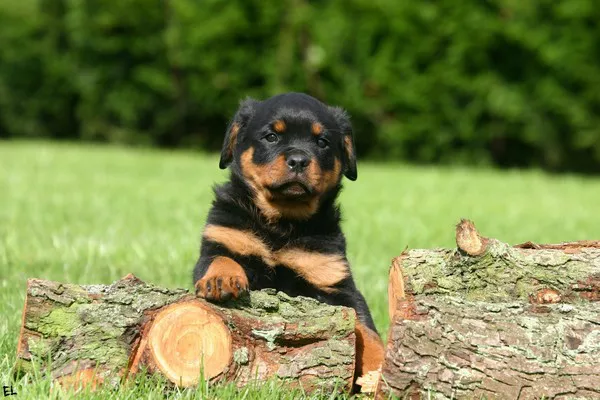Crate training is an effective way to train your rottweiler puppy and provide them with a safe and comfortable space to rest. However, crate training can be a daunting task for many new rottweiler owners. In this article, we will explore how to crate train a rottweiler puppy and provide tips for ensuring that the training is done safely and effectively.
Crate train a rottweiler puppy:
Crate training a rottweiler puppy requires a combination of patience, consistency, and positive reinforcement. Here are some tips for crate training a rottweiler puppy:
Choose the right crate: Choose a crate that is the right size for your rottweiler puppy. The crate should be large enough for your rottweiler to stand up, turn around, and lie down comfortably, but not so large that they have room to use one end as a bathroom and the other end as a sleeping area.
Introduce the crate gradually: Introduce the crate to your rottweiler puppy gradually, so that they become comfortable with it. Start by placing treats and toys inside the crate and leaving the door open. Encourage your rottweiler to explore the crate on their own.
Use positive reinforcement: Use positive reinforcement to encourage your rottweiler puppy to use the crate. Reward them with treats and praise when they enter the crate on their own or when they remain calm and quiet inside the crate.
Establish a routine: Establish a routine for using the crate. Use the crate at regular intervals, such as when you are leaving the house or when your rottweiler puppy needs a nap. This will help your rottweiler puppy to become accustomed to the crate and feel more comfortable using it.
Be patient: Crate training a rottweiler puppy can take time and patience. Be patient with your rottweiler puppy and don’t rush the process. Use positive reinforcement to encourage good behavior and avoid punishing your rottweiler puppy for mistakes.
Tips for crate training a rottweiler puppy:
Start early: It is important to start crate training your rottweiler puppy as early as possible, ideally when they are still a puppy. This will help to establish good habits and prevent bad habits from forming.
Use the crate for short periods: Use the crate for short periods of time at first, such as 30 minutes to an hour. Gradually increase the amount of time that your rottweiler puppy spends in the crate as they become more comfortable with it.
Make the crate comfortable: Make the crate comfortable for your rottweiler puppy by adding a soft blanket or bed inside. This will help them to feel more comfortable and relaxed in the crate.
Use a command: Use a command, such as “crate” or “kennel”, to signal to your rottweiler puppy that it is time to go into the crate. This will help to establish a routine and make the process more predictable for your rottweiler puppy.
Avoid using the crate as punishment: Avoid using the crate as punishment for bad behavior. This can make your rottweiler puppy fearful of the crate and can lead to negative associations with it.
Crate training dos and don’ts:
Here are some dos and don’ts for crate training a rottweiler puppy:
Dos:
Do use positive reinforcement to encourage good behavior.
Do make the crate comfortable and inviting for your rottweiler puppy.
Do establish a routine for using the crate.
Do be patient and consistent with the training process.
Do use the crate for short periods of time at first, gradually increasing the amount of time that your rottweiler puppy spends in the crate.
Don’ts:
Don’t use the crate as punishment for bad behavior.
Don’t force your rottweiler puppy into the crate.
Don’t leave your rottweiler puppy in the crate for extended periods of time.
Don’t use the crate as a substitute for exercise or socialization.
Don’t leave your rottweiler puppy in the crate for too long, as this can lead to anxiety and stress.
Common crate training problems:
Here are some common crate training problems and how to address them:
Whining or barking: If your rottweiler puppy whines or barks when in the crate, they may be anxious or uncomfortable. Try using positive reinforcement to encourage good behavior, and make sure that the crate is comfortable and inviting.
Chewing or scratching: If your rottweiler puppy chews or scratches at the crate, they may be bored or anxious. Try providing them with toys or treats to keep them occupied, and make sure that the crate is the right size and comfortable.
Refusing to enter the crate: If your rottweiler puppy refuses to enter the crate, try using positive reinforcement to encourage them to explore it on their own. Place treats and toys inside the crate, and leave the door open so that they can come and go as they please.
Accidents in the crate: If your rottweiler puppy has accidents in the crate, they may be spending too much time in it or the crate may be too large. Try using the crate for shorter periods of time, and make sure that it is the right size for your rottweiler puppy.
Conclusion:
In conclusion, crate training a rottweiler puppy requires patience, consistency, and positive reinforcement. Choose the right crate, introduce it gradually, and use positive reinforcement to encourage good behavior. Establish a routine for using the crate, and be patient and consistent with the training process. By following these tips, you can crate train your rottweiler puppy and provide them with a safe and comfortable space to rest.


